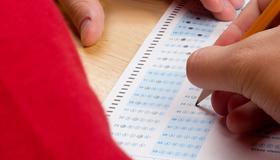As the economy continues to struggle, some segments of society are still feeling the financial pain. Public schools across the country are still dealing with budget cuts that have forced them to make difficult decisions in recent years. When pressure from performance-based assessments is added to the mix, finding funding to teach kids to the standards becomes an even bigger challenge. Then, throw in the very real 21st century need to bring more technology into classrooms – a need that doesn’t come cheap. How are America’s public schools coping with these changes?
Public Schools and Recessionary Funding
Public schools are funded through an array of measures, including local property taxes, state funds, and federal funds. However, as Intercultural Development Research Association explains, the majority of school funding is derived from local property taxes and state funds. The state funds for schools come from sources such as gas taxes, franchise taxes, and other additional taxes.

Source: National Center for Education Statistics
When a recession occurs, schools are hit by a loss from all three of these funding sources. For example, in areas with a high property tax, schools are generally provided with more funding; conversely, low property taxes usually result in schools with less funding. As many Americans report job loss and subsequent home loss, however, the amount of money taken in from property taxes is gradually decreasing. If individuals are not buying






















